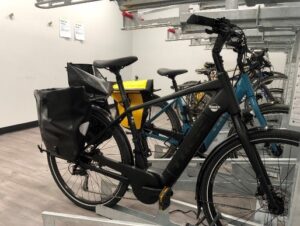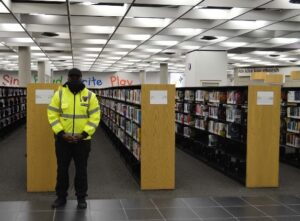Five procurement strategies for public sector organizations to make a positive impact

As the world marches closer to 2030, an important milestone year on the path to net-zero emissions by 2050, the procurement function in organizations cannot be an oversight for those hoping to achieve a net-zero, circular, and inclusive economy.
Incorporating sustainability requirements into the procurement of goods and services is a tangible everyday practice that municipalities can do to create a positive ripple effect directly within their community and beyond by creating demand in the marketplace for sustainable products.
The Canadian Collaboration for Sustainable Procurement (CCSP) recently released its 12th Annual Report on the State of Sustainable Public Procurement in Canada, which highlights trends, best practices, and case studies from the CCSP’s network of 40 municipalities, crown corporations, and post-secondary institutions. This group of institutions employs a holistic view of sustainable procurement, encompassing environmental, social, Indigenous, and ethical pillars – which encourages members to be open to the unique sustainability risks and opportunities within any given procurement.
The report highlights five procurement strategies public organizations can use right now to make a positive impact.
1. Turn to Electrification to Help Achieve Climate Action Goals
In 2021, the global increase in catastrophic climatic events was noticeable, seen as the myriad of unprecedented fires, floods, smoke, heatwaves, and windstorms. In November, the COP26 conference in Glasgow focused on the transition toward a more sustainable, low-carbon world. The conference was a platform for leaders to set a global commitment to achieve net-zero emissions by 2050.
Procurements from the public sector are a key determining factor in the scale of work done to slow climate change and reach global 2050 goals. The City of Ottawa purchased electric boilers to be installed in three of their largest recreation facilities – projecting to reduce the facilities’ greenhouse gas (GHG) footprints by 320 tonnes of CO2 annually. With the updated hydro costs, the cost of the project is likely to be repaid to the city in six years. This purchase stemmed from a recommendation from the city’s Corporate Energy Management Office (CEMO) to electrify the heating systems based on a combined costs and carbon analysis.

Through the 2021 Zero Emission Transit Fund, the federal government committed to investing $2.75 billion over the coming five years to support the electrification of public transit and school bus operations. The City of Brampton deployed the single largest standardized battery electric bus fleet (globally, to date), along with high-powered overhead on-route charging systems – the first step in completely electrifying the city’s fleet. The District of Saanich launched a district-wide e-bike incentive pilot program in October and purchased a small e-bike fleet for district staff. This procurement demonstrated leadership in mode shift toward active transportation. It also helped reduce pressure on the existing pool of fleet vehicles, providing more climate-friendly transportation options at a much lower price than sourcing multiple new electric vehicles and charging infrastructure.
2. Put Programs in Place, Enable Staff to Act on Social Procurement Commitments
Social procurement, a pillar of sustainable procurement, has been increasingly gaining traction across the public sector. The social pillar focuses on advancing diversity and inclusivity by creating economic opportunities for equity-deserving and other target populations. This includes purchasing from suppliers that offer social value, such as non-profits, social enterprises, and diverse suppliers, as well as mandating suppliers to deliver social value as a condition of the contract. Many councils are recognizing this importance and are asking staff to start actioning on social procurement. It’s important to ensure that staff can put the right pieces in place to support this activation and gain real results.
The City of Toronto’s Social Procurement Program is one of Canada’s flagship programs of its kind, improving access for diverse suppliers to their supply chain and enabling procurement spending to drive inclusive economic growth. The city has a Social Procurement Policy in place, utilizes a social value supplier database, invites certified diverse suppliers to attend “Doing Business with the City” vendor workshops, and hosts supplier diversity trade shows.
The City of Calgary created their own Public Value through Procurement Policy, Benefit Driven Procurement Strategy, and a Benefit Driven Procurement Leadership Questionnaire. From council approval in September 2021 through until January 2022, over 60 Requests for Proposals (RFPs) have included the Questionnaire in their evaluation criteria. These procurements have resulted in contracting local businesses, creating meaningful employment opportunities for underrepresented groups, and supporting suppliers who are implementing their own social procurement and living wage policies.
3. Find Opportunities to Support Local Economies and People
The COVID-19 pandemic has highlighted the inequalities and vulnerabilities of global supply chains, and the importance of investing in local economies. Public sector organizations are looking inward to their own communities and conducting match-making analyses to identify the product and service categories that can be fulfilled by local businesses.
Thompson Rivers University (TRU) demonstrated this through the purchase of a unique set of custom, wooden coffee, and end tables from a local woodworking company in Kamloops, BC. The tables were crafted using local and salvaged wood from a neighbourhood development project that would have otherwise ended up in landfill. The purchase also had comparatively less emissions because of the manufacturing process that was used as well as significantly reduced transportation for delivery.

Municipalities can also leverage local impact in larger procurements by requesting contractors to engage with local social enterprises and non-profits that support equity-seeking individuals. The City of Vancouver released a Request for Application (RFA) to prequalify companies that specialize in emergency, abatement, and repair restoration services. The RFA included requirements that the awarded company must complete a portion of the services by sub-contracting or partnering with social enterprise organizations who help hire people facing barriers to employment.
4. Include Justice in Your EDI and Indigenous Reconciliation Efforts
Equity, Diversity, and Inclusion (EDI) has been a talking point and practice in the industry for a few years, but the addition of “Justice” to the acronym has expanded the conversation. Justice shines light on who is being brought into the conversation, creating equal opportunities and asking if our procurement policies and practices really work for everyone. The City of Toronto has been working on creating a Transportation JEDI category in their engineering roster calls to make it easier for smaller firms to compete.

The City of Winnipeg’s recent convergence of interests for an RFP for the Provision of Security Services at a Library included a strong set of social-, ethical-, and Indigenous-related requirements. The RFP was awarded to a security services organization that understood the bid requirements of the contract – namely, upholding their commitment to hire a staff of at least 50 percent Indigenous peoples, as well as paying a living wage to all guard staff. As part of the contract, the city also began providing concerted training for security staff in life saving procedures, conflict de-escalation, anti-racism, cultural awareness, harm reduction, and trauma and mental health awareness. Multiple stakeholder groups were engaged in the process as well as multiple community member groups.
5. Leverage Your Peers and Turn Up the Collaboration
The partnership between the Procurement and Sustainability groups is especially important to achieve high impact, as well as to drive more sustainability thinking into the planning and needs assessment stages of the procurement process. This powerful partnership can deliver a compelling message by communicating in internal working groups and sharing cross-developmental goals. When sustainable and procurement groups champion common values to the organization, leadership listens.
This year, the City of Mississauga established a cross-functional team that convenes quarterly to address sustainable procurement opportunities; the City of Ottawa formed a cross-departmental Social Procurement Advisory Group; and the City of Kelowna’s Purchasing Manager engaged the city’s cross-functional Sustainability Action Team to raise awareness around sustainable procurement.
Collaboration amongst peer organizations is another avenue ripe with opportunity, whether through group purchasing initiatives or aligning on standard sustainability criteria. For example, Sheridan College, as part of the Halton Co-operative Purchasing Group (HCPG), facilitated a contract with a new supplier of winter entryway mats. Though unassuming, the new mat rental program includes a redesigned washing process that will reduce CO2 emissions by using mats with increased water retention technology, as well as reduced emissions from fewer fleet vehicles in pick-up/delivery.
Municipalities can – and are – leveraging their procurement practices to help drive broader corporate sustainability goals like reducing waste and advancing circularity, reducing GHG emissions, supporting local economic development, increasing supplier diversity, and contributing to Indigenous reconciliation. Don’t wait to get started in your own institution. MW
✯ Municipal World Insider and Executive Members: You might also be interested in Yuill Herbert’s article: The carbon budget.
Amanda Chouinard is the Program Manager for the CCSP.
Related resource materials:


